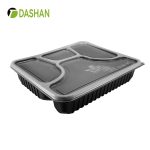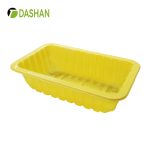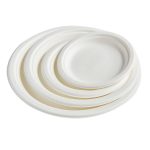Introduction: The Rise of Eco-Friendly Food Packaging
In recent years, the global foodservice and retail industries have been facing growing pressure to reduce plastic waste and switch to more sustainable packaging. Governments, consumers, and international organizations are all demanding change. One solution that has gained significant traction is cornstarch-based packaging, especially in applications like dumpling boxes. Cornstarch dumpling boxes combine practicality, food safety, and eco-friendliness—making them a strong alternative to traditional plastic or Styrofoam containers.
As dumplings (jiaozi, gyoza, or potstickers) become increasingly popular worldwide in restaurants, supermarkets, and delivery platforms, the need for safe, sustainable, and visually appealing dumpling packaging is greater than ever. Cornstarch dumpling boxes meet this need by offering biodegradable properties without compromising durability.
What Are Cornstarch Dumpling Boxes?
Cornstarch dumpling boxes are biodegradable food containers made from cornstarch-based bioplastic. Unlike petroleum-based plastics (PP, PET, or PS), cornstarch packaging is derived from renewable resources—mainly corn. Through a fermentation and polymerization process, cornstarch is converted into polylactic acid (PLA) or starch blends, which can then be molded into rigid containers.
These boxes are specifically designed to store dumplings, dim sum, and other delicate foods. They typically feature:
-
Compartment design to keep dumplings from sticking together
-
Moisture resistance to preserve freshness
-
Heat tolerance (suitable for steaming or microwaving within safe limits)
- Compostability under industrial or controlled composting conditions
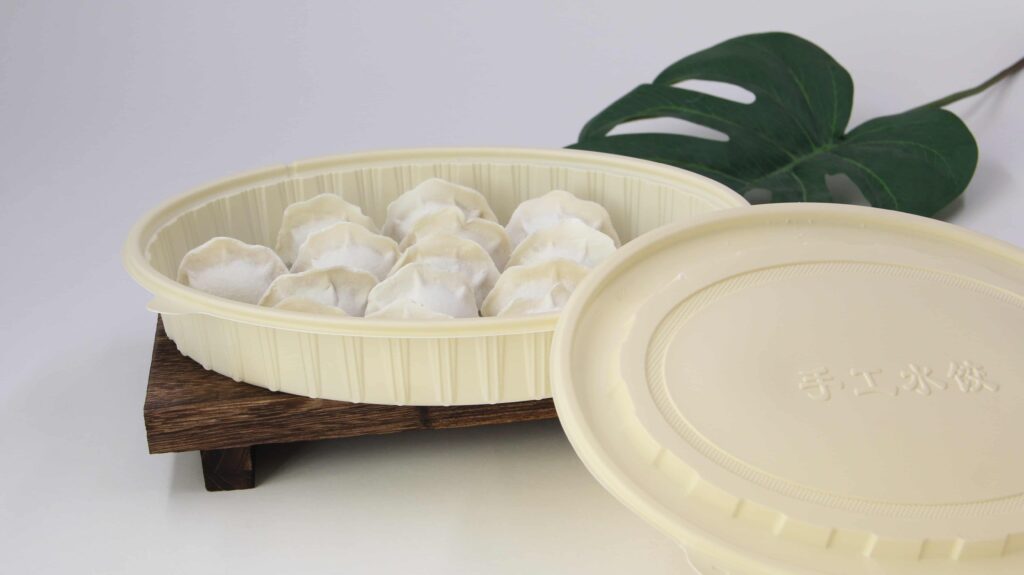
Key Advantages of Cornstarch Dumpling Boxes
1. Eco-Friendly and Biodegradable
The most obvious benefit is sustainability. Cornstarch dumpling boxes can degrade into carbon dioxide and water under composting conditions, leaving no toxic residues. Unlike plastics that remain in landfills for centuries, cornstarch boxes help reduce the global plastic waste crisis.
2. Safe for Food Contact
Cornstarch materials are non-toxic, BPA-free, and food-safe, ensuring dumplings and other foods are not exposed to harmful chemicals. This is especially important for hot or oily foods where chemical leaching could be a risk with certain plastics.
3. Functional Durability
While biodegradable, cornstarch dumpling boxes are strong and durable enough for real-world use. They resist oil, water, and moderate heat, making them suitable for takeout, frozen storage, and reheating.
4. Consumer Appeal
Modern consumers are increasingly eco-conscious. Restaurants and retailers that use “green packaging” benefit from improved brand image, customer loyalty, and even higher sales. A cornstarch dumpling box sends a clear sustainability message to customers.
5. Compliance with Regulations
Many countries—including the EU, Japan, and some U.S. states—are banning single-use plastics. Cornstarch dumpling boxes are compliant with these regulations, making them a future-proof packaging solution.
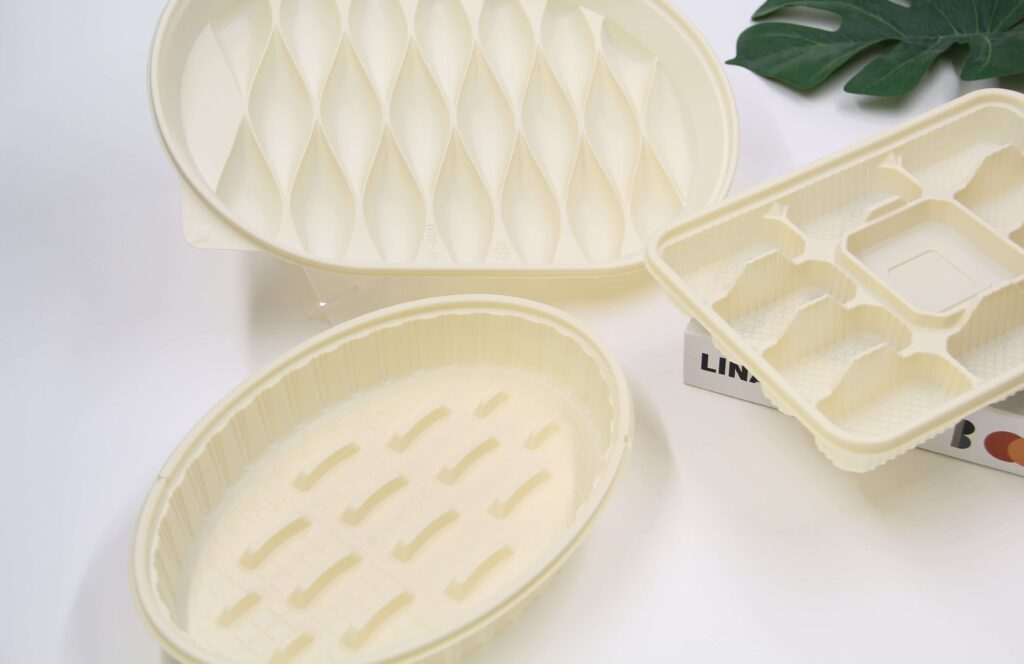
Applications of Cornstarch Dumpling Boxes
Cornstarch dumpling boxes can be applied across multiple food sectors:
-
Restaurants and Takeout Services
-
Perfect for serving freshly steamed dumplings
-
Leak-resistant and stackable for easy delivery
-
-
Frozen Dumpling Brands
-
Used for retail packaging of frozen dumplings in supermarkets
-
Strong enough to withstand freezing temperatures
-
-
Catering and Events
-
A sustainable option for buffets, parties, and food festivals
-
Enhances brand reputation at eco-conscious events
-
-
Export Markets
-
For brands selling dumplings internationally, cornstarch packaging meets eco-certifications demanded by overseas distributors and retailers.
-
Cornstarch Dumpling Boxes vs. Plastic & Paper Packaging
| Feature | Cornstarch Dumpling Boxes | Plastic (PP, PET, PS) | Paper / Cardboard |
|---|---|---|---|
| Sustainability | Compostable, biodegradable | Non-biodegradable | Biodegradable but may require coatings |
| Food Safety | BPA-free, non-toxic | Depends on type, risk of chemical leaching | Safe but limited heat/oil resistance |
| Strength | Strong, oil- and water-resistant | Very strong, long-lasting | Weak against moisture and grease |
| Heat Resistance | Moderate (up to 100–120°C) | High (up to 120–200°C) | Low (softens with steam or oil) |
| Consumer Perception | Premium, eco-friendly | Negative due to plastic waste concerns | Neutral, not always premium |
This comparison shows that cornstarch dumpling boxes strike the best balance between eco-responsibility and practicality, though plastics still dominate in cost-efficiency and extreme durability.
Environmental Impact and Global Relevance
According to the United Nations Environment Programme (UNEP), only 9% of plastic waste is recycled worldwide, while over 70% ends up in landfills or oceans. Packaging accounts for nearly 40% of global plastic consumption. Cornstarch-based packaging offers a real alternative by reducing dependency on fossil fuels and enabling a circular economy.
Additionally, corn is abundant and renewable, making cornstarch a scalable raw material. While concerns about agricultural land use exist, innovations in starch-based bioplastics continue to improve efficiency and lower costs.
Challenges and Limitations
While promising, cornstarch dumpling boxes are not without challenges:
-
Higher Cost: Currently more expensive than traditional plastics.
-
Limited Heat Resistance: Not suitable for oven baking or extreme temperatures.
-
Composting Infrastructure: Requires industrial composting facilities to break down efficiently.
-
Shelf Life: May have shorter storage stability compared to PP or PET packaging.
However, with consumer demand and government incentives, these barriers are gradually being overcome.
Industry Trends: The Future of Dumpling Packaging
-
Hybrid Packaging: Combining cornstarch with PLA, PBAT, or bamboo fibers for stronger performance.
-
Smart Packaging: Incorporating freshness indicators or QR codes on eco-packaging.
-
Global Bans on Plastics: Driving rapid adoption of biodegradable materials.
-
Customization & Branding: Businesses want embossed logos, unique shapes, and transparent lids for better presentation.
FAQs About Cornstarch Dumpling Boxes
Q1: Are cornstarch dumpling boxes microwave-safe?
Yes, they can withstand moderate microwave heating, but prolonged exposure or very high temperatures may cause deformation.
Q2: Do they cost more than plastic boxes?
Yes, typically 20–40% more, but prices are falling as production scales up.
Q3: Are they suitable for frozen dumplings?
Yes, cornstarch boxes can handle freezing conditions without cracking.
Q4: Do they compost in home gardens?
Not easily. They require industrial composting facilities for efficient breakdown.
Q5: Can they hold oily foods?
Yes, cornstarch packaging is designed to resist oil and moisture.
Conclusion: A Smart Step Toward Sustainable Food Packaging
Cornstarch dumpling boxes are more than just containers—they represent a commitment to sustainability, consumer health, and regulatory compliance. For restaurants, retailers, and food brands, adopting cornstarch packaging means staying ahead of environmental regulations, meeting consumer expectations, and contributing to global waste reduction.
As the dumpling market grows worldwide, eco-friendly packaging will play a decisive role in shaping brand reputation and customer loyalty. Cornstarch dumpling boxes offer a practical and sustainable solution—one that’s ready to meet the needs of 2025 and beyond.
References
-
UNEP – Single-Use Plastics: A Roadmap for Sustainability
https://www.unep.org/resources/report/single-use-plastics-roadmap-sustainability -
European Bioplastics – Bioplastics Market Data
https://www.european-bioplastics.org/market/ -
Ellen MacArthur Foundation – The New Plastics Economy
https://ellenmacarthurfoundation.org/the-new-plastics-economy -
Food Packaging Forum – Biodegradable Food Packaging Overview
https://www.foodpackagingforum.org/

